
Godot4ThirdPersonCombatPrototype
A prototype project for third person combat. Contains basics for player movement, camera, animations, combat, enemy AI, user interface, sound effects, and background music.
Stars: 94
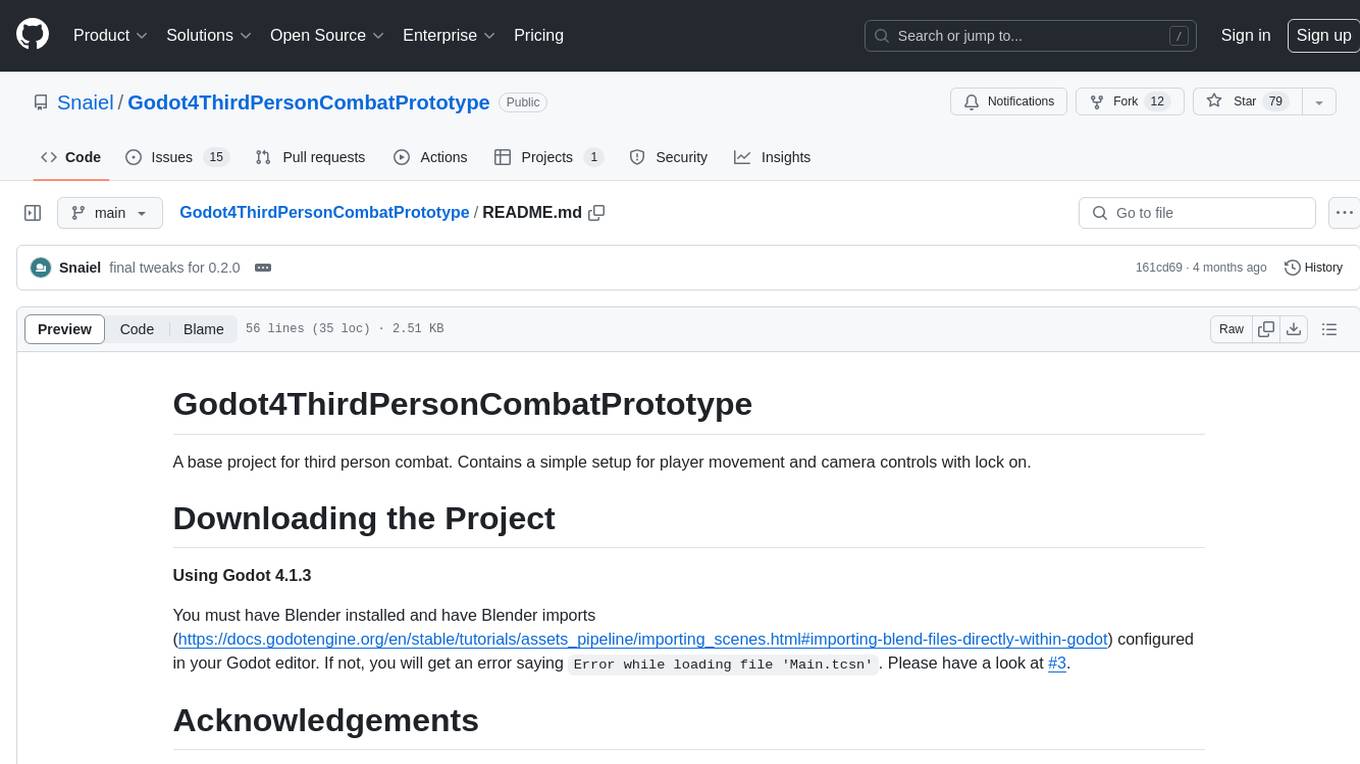
Godot4ThirdPersonCombatPrototype is a base project for third person combat, featuring player movement and camera controls with lock-on functionality. It includes setups for models, animations, AI behavior, state machines, audio, and custom resources. The project aims to provide a foundation for developers to create third-person combat mechanics in their games.
README:
https://github.com/user-attachments/assets/a080634b-b9f3-4a6d-abf5-c0003fe16b34
A base project for third person combat. Feature-filled setup with core systems implemented for player character, combat, and enemies.
Using Godot 4.2.2
You must have Blender installed and have Blender imports (https://docs.godotengine.org/en/stable/tutorials/assets_pipeline/importing_scenes.html#importing-blend-files-directly-within-godot) configured in your Godot editor. If not, you will get an error saying Scene file 'Main.tcsn' appears to be invalid/corrupt or Error while loading file 'Main.tcsn' caused by the broken dependencies from the blender files not being imported. Please have a look at https://github.com/Snaiel/Godot4ThirdPersonCombatPrototype/issues/3.
- Sekiro: Shadows Die Twice for being the game with the best combat mechanics
- https://www.youtube.com/watch?v=UpF7wm0186Q provided the base movement and camera controller
- https://www.youtube.com/watch?v=74y6zWZfQKk as an introduction to composition
- https://kenney.nl/assets/prototype-textures for the grid texture
- https://www.mixamo.com/ for the character models and animation
- https://www.youtube.com/watch?v=2gx1lfhqnFM as an introduction to blend trees
- https://www.youtube.com/watch?v=fq0hR2tIsRk showed how to enable root motion
- https://github.com/finepointcgi/Mixamo-Root blender addon for adding root bone to animations
- https://www.youtube.com/watch?v=A2JMYQBWeig for showing how to attach weapons to a character
- https://www.youtube.com/watch?v=6VBCXvfNlCM behaviour tree introduction
- https://www.gamedeveloper.com/programming/behavior-trees-for-ai-how-they-work in depth behaviour tree introduction
- https://github.com/bitbrain/beehave behaviour tree library for Godot
- https://www.youtube.com/watch?v=EOocBMBbL-E&t=4s for navmesh basics
- https://www.youtube.com/watch?v=ow_Lum-Agbs introduction into state machines
- https://medium.com/dotcrossdot/hierarchical-finite-state-machine-c9e3f4ce0d9e introduction into hierarchical finite state machines
- https://www.audacityteam.org/ Audacity free audio editor
- https://www.kenney.nl/assets/category:Audio?sort=update sound packs from Kenney
- https://opengameart.org/content/crystal-cave-song18 ambient background music from Cynic Music
- https://opengameart.org/content/hyper-ultra-racing fast paced music from Cynic Music
- https://docs.godotengine.org/en/stable/tutorials/scripting/resources.html wonderful documentation
- https://www.youtube.com/watch?v=vzRZjM9MTGw great explanation
Giving credit is not necessary but much appreciated!
For Tasks:
Click tags to check more tools for each tasksFor Jobs:
Alternative AI tools for Godot4ThirdPersonCombatPrototype
Similar Open Source Tools

Godot4ThirdPersonCombatPrototype
Godot4ThirdPersonCombatPrototype is a base project for third person combat, featuring player movement and camera controls with lock-on functionality. It includes setups for models, animations, AI behavior, state machines, audio, and custom resources. The project aims to provide a foundation for developers to create third-person combat mechanics in their games.
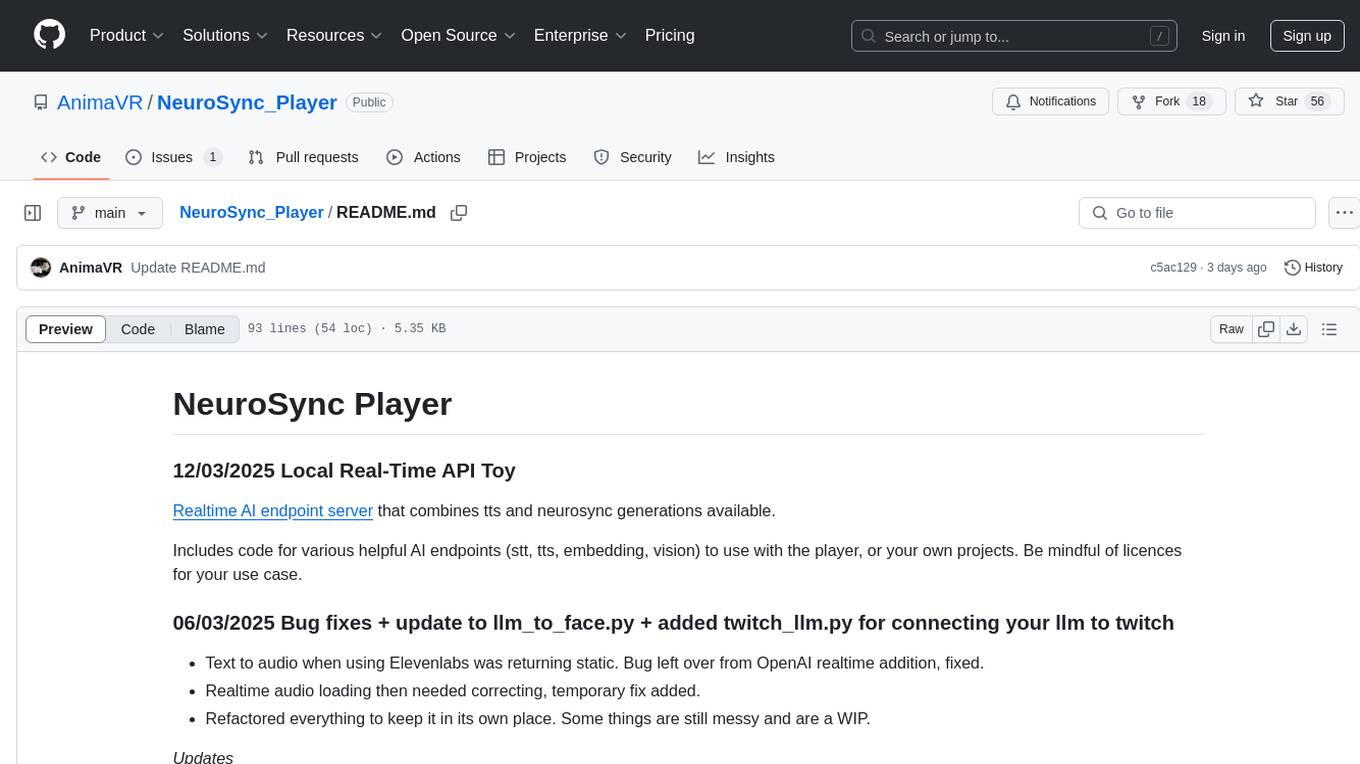
NeuroSync_Player
NeuroSync Player is a real-time AI endpoint server that combines text-to-speech and NeuroSync generations. It includes code for various AI endpoints such as speech-to-text, text-to-speech, embedding, and vision. The tool allows users to connect their llm to Twitch and YouTube, enabling the llm-powered metahuman to respond to viewers in real-time. Additionally, it offers features like push-to-talk, face animation integration, and support for blendshapes generated from audio inputs for Unreal Engine 5. Users can train and fine-tune their own models using NeuroSync Trainer Lite, with simplified loss functions and mixed precision for faster training. The tool also supports data augmentation to help with fine detail reproduction.
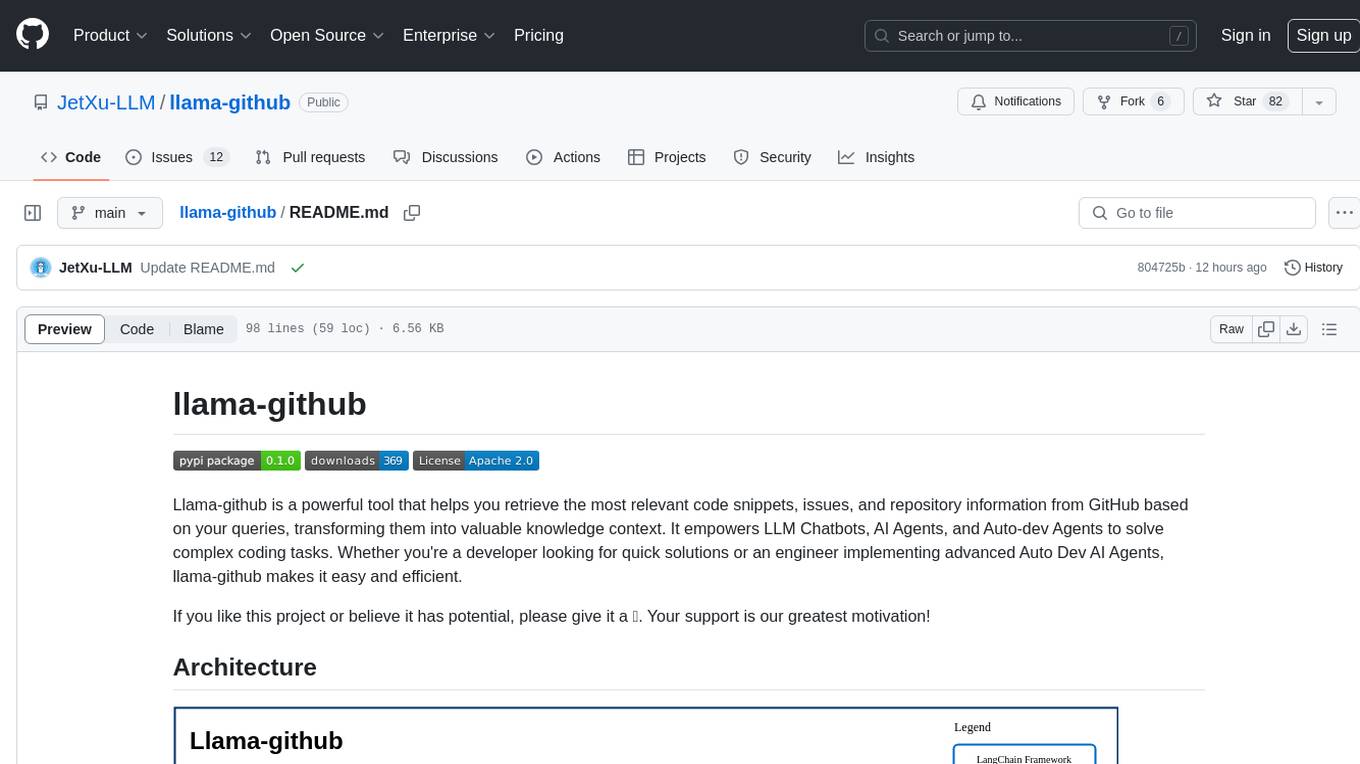
llama-github
Llama-github is a powerful tool that helps retrieve relevant code snippets, issues, and repository information from GitHub based on queries. It empowers AI agents and developers to solve coding tasks efficiently. With features like intelligent GitHub retrieval, repository pool caching, LLM-powered question analysis, and comprehensive context generation, llama-github excels at providing valuable knowledge context for development needs. It supports asynchronous processing, flexible LLM integration, robust authentication options, and logging/error handling for smooth operations and troubleshooting. The vision is to seamlessly integrate with GitHub for AI-driven development solutions, while the roadmap focuses on empowering LLMs to automatically resolve complex coding tasks.
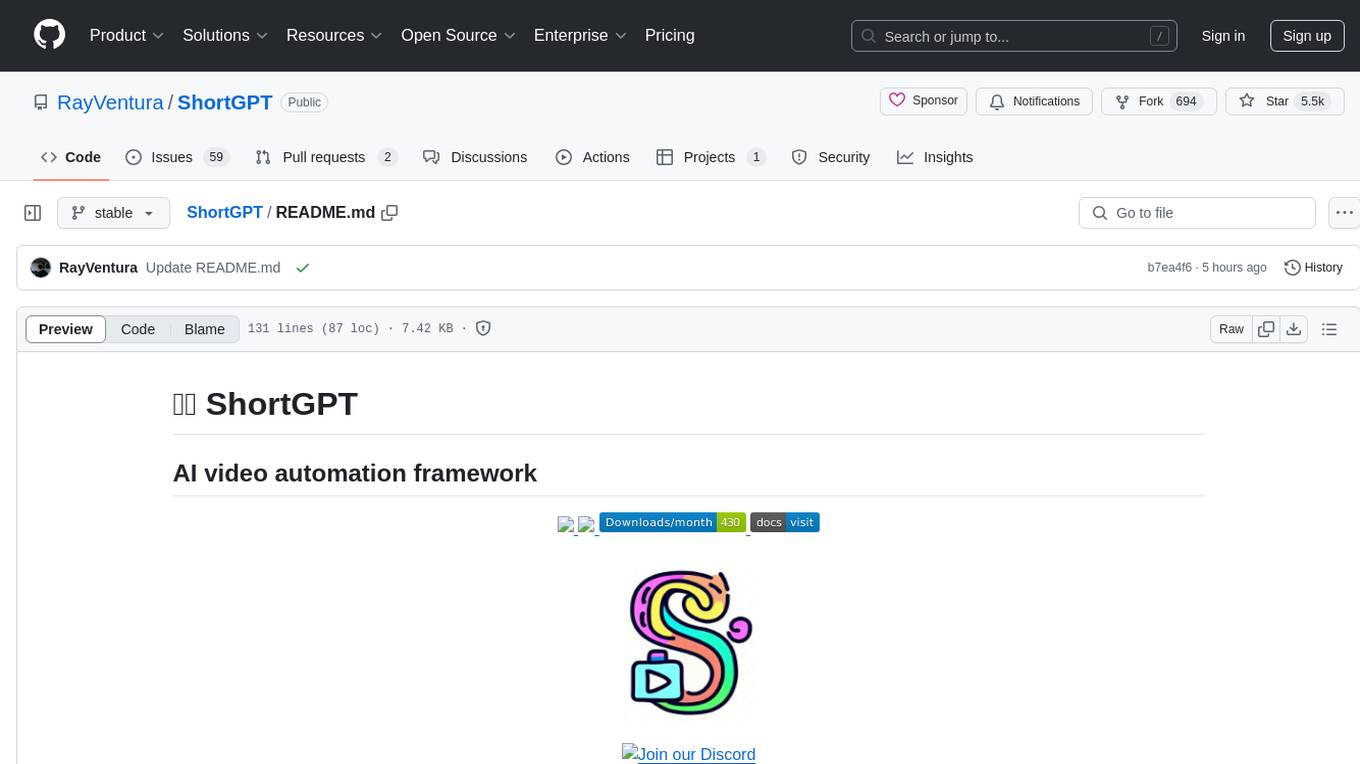
ShortGPT
ShortGPT is a powerful framework for automating content creation, simplifying video creation, footage sourcing, voiceover synthesis, and editing tasks. It offers features like automated editing framework, scripts and prompts, voiceover support in multiple languages, caption generation, asset sourcing, and persistency of editing variables. The tool is designed for youtube automation, Tiktok creativity program automation, and offers customization options for efficient and creative content creation.
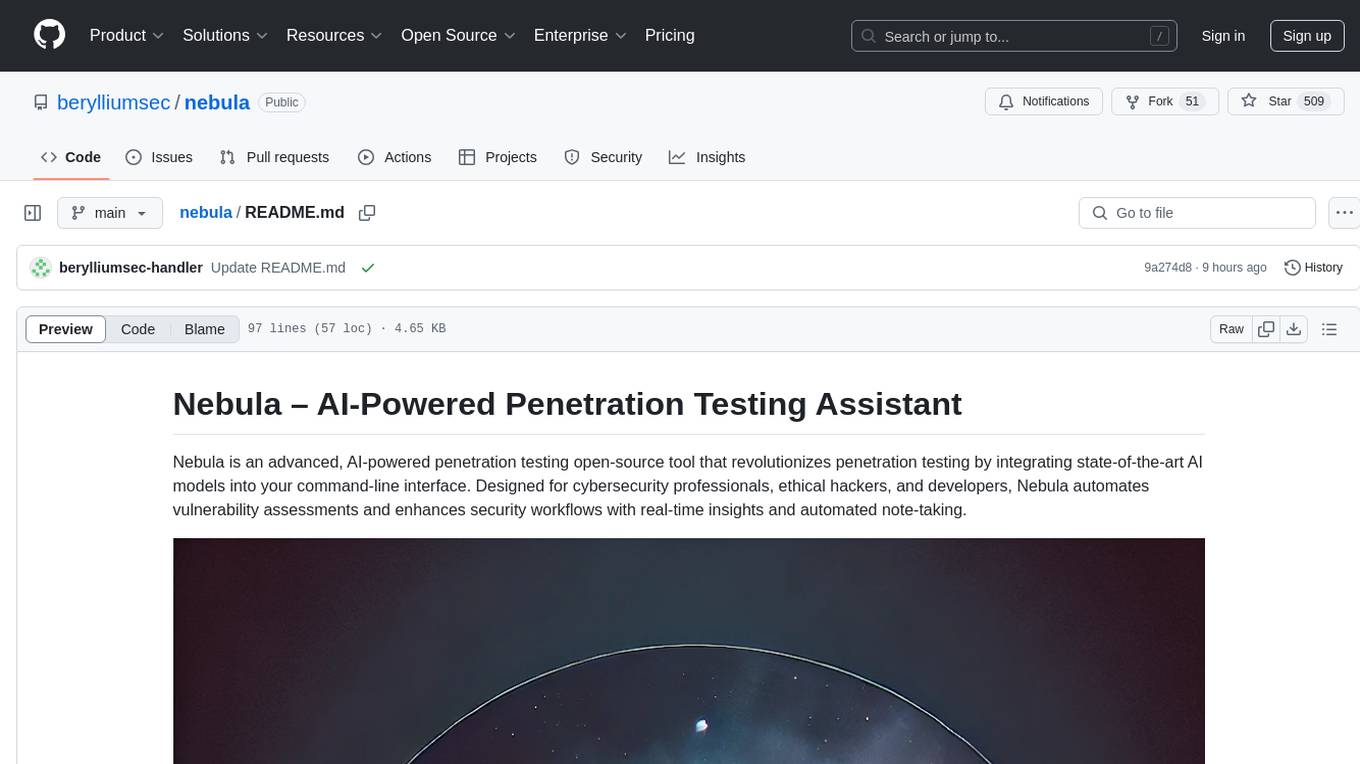
nebula
Nebula is an advanced, AI-powered penetration testing tool designed for cybersecurity professionals, ethical hackers, and developers. It integrates state-of-the-art AI models into the command-line interface, automating vulnerability assessments and enhancing security workflows with real-time insights and automated note-taking. Nebula revolutionizes penetration testing by providing AI-driven insights, enhanced tool integration, AI-assisted note-taking, and manual note-taking features. It also supports any tool that can be invoked from the CLI, making it a versatile and powerful tool for cybersecurity tasks.
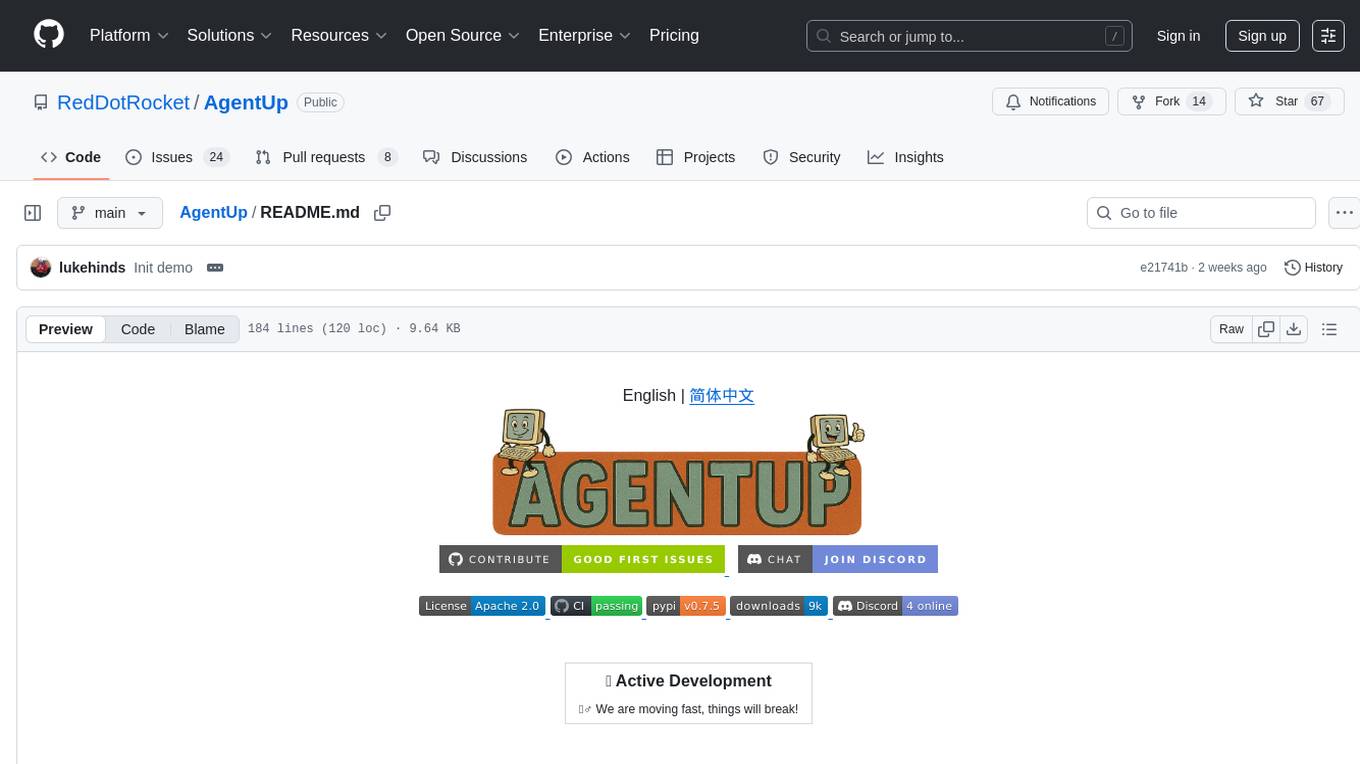
AgentUp
AgentUp is an active development tool that provides a developer-first agent framework for creating AI agents with enterprise-grade infrastructure. It allows developers to define agents with configuration, ensuring consistent behavior across environments. The tool offers secure design, configuration-driven architecture, extensible ecosystem for customizations, agent-to-agent discovery, asynchronous task architecture, deterministic routing, and MCP support. It supports multiple agent types like reactive agents and iterative agents, making it suitable for chatbots, interactive applications, research tasks, and more. AgentUp is built by experienced engineers from top tech companies and is designed to make AI agents production-ready, secure, and reliable.
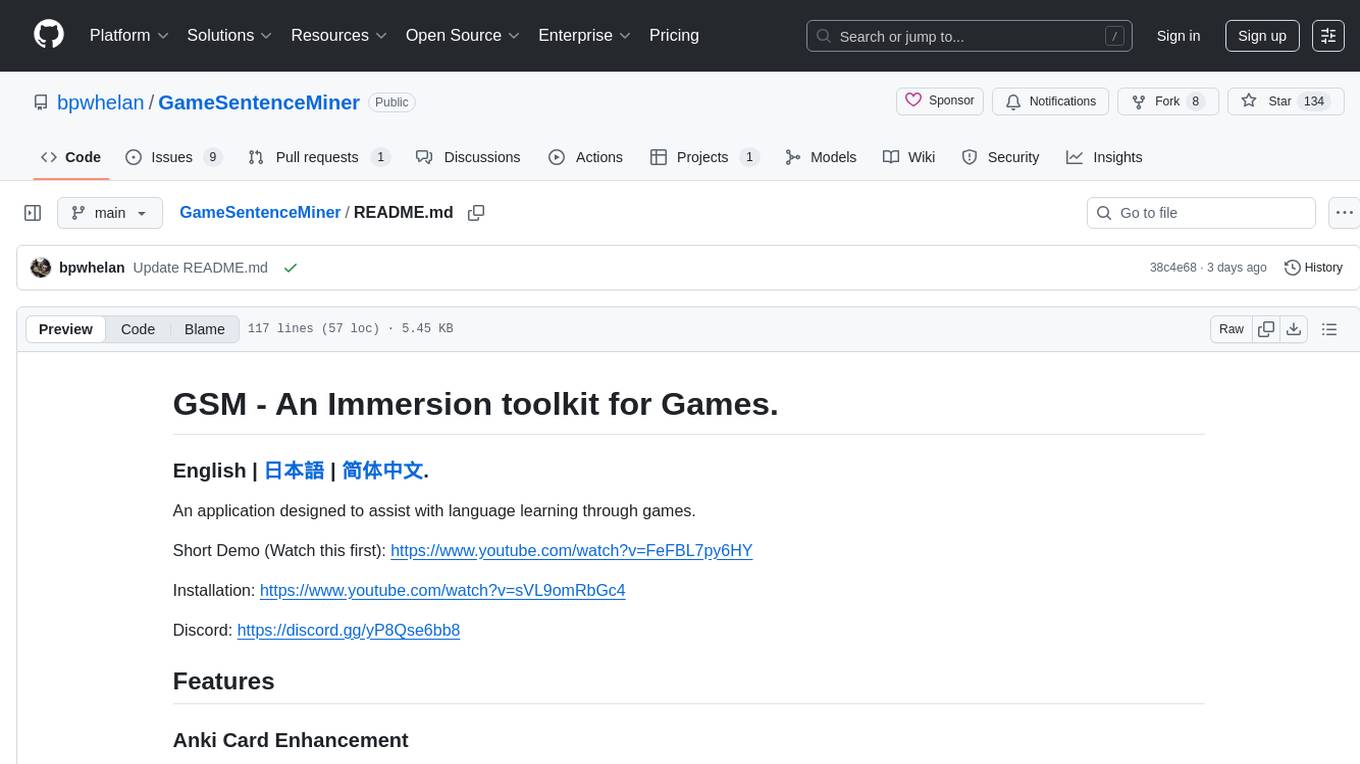
GameSentenceMiner
GameSentenceMiner (GSM) is an immersion toolkit designed to assist with language learning through games. It enhances Anki cards with automated audio capture, manual trim options, screenshot capture, multi-line support, and AI translation. Additionally, GSM offers OCR capabilities with easier setup, exclusion zones, two-pass OCR system, consistent audio timing, and support for multiple languages. The tool also features game launcher capabilities for simplifying game setup and launching. Basic requirements include an Anki card creation tool, a method of extracting text from games, and, of course, a game. GSM provides detailed documentation and FAQs to help users understand its functionality and troubleshoot any issues. Users can seek support through the project's Discord channel or by creating issues on the repository.
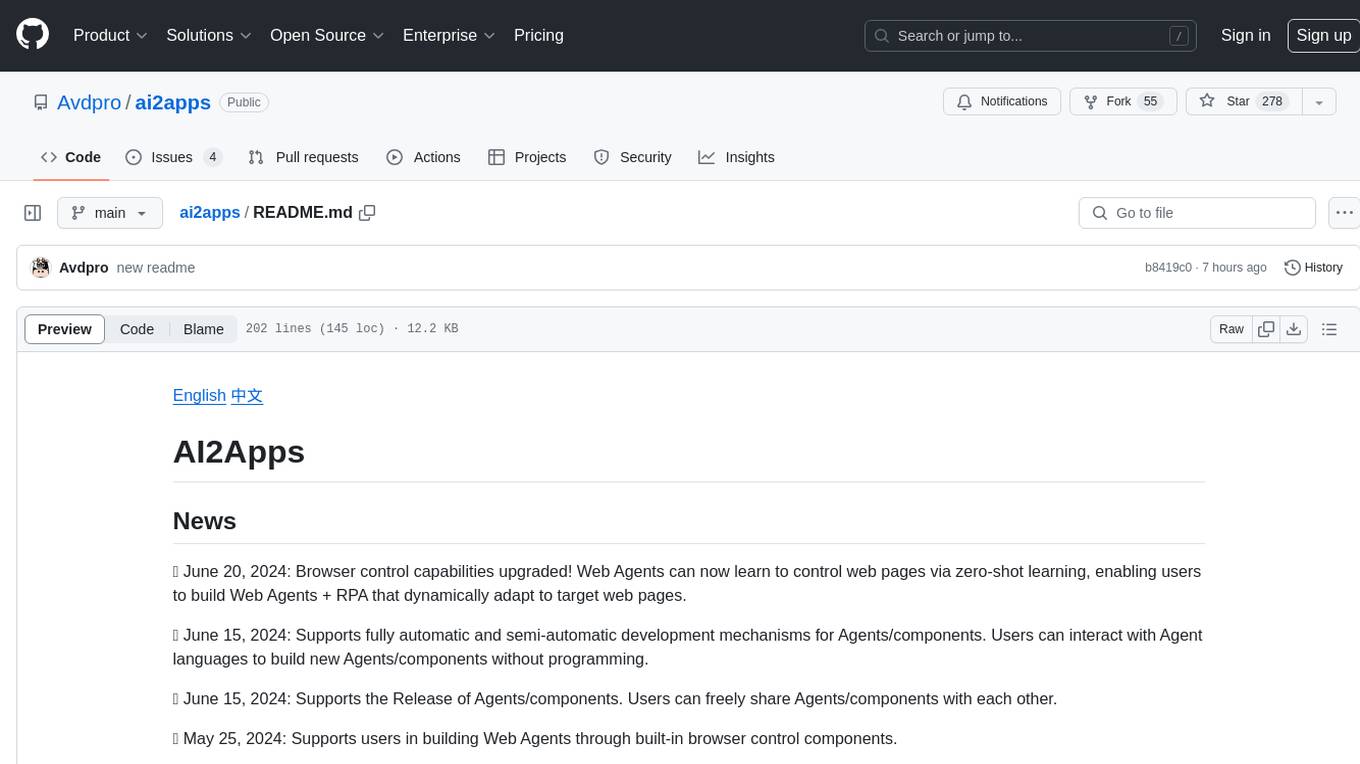
ai2apps
AI2Apps is a visual IDE for building LLM-based AI agent applications, enabling developers to efficiently create AI agents through drag-and-drop, with features like design-to-development for rapid prototyping, direct packaging of agents into apps, powerful debugging capabilities, enhanced user interaction, efficient team collaboration, flexible deployment, multilingual support, simplified product maintenance, and extensibility through plugins.
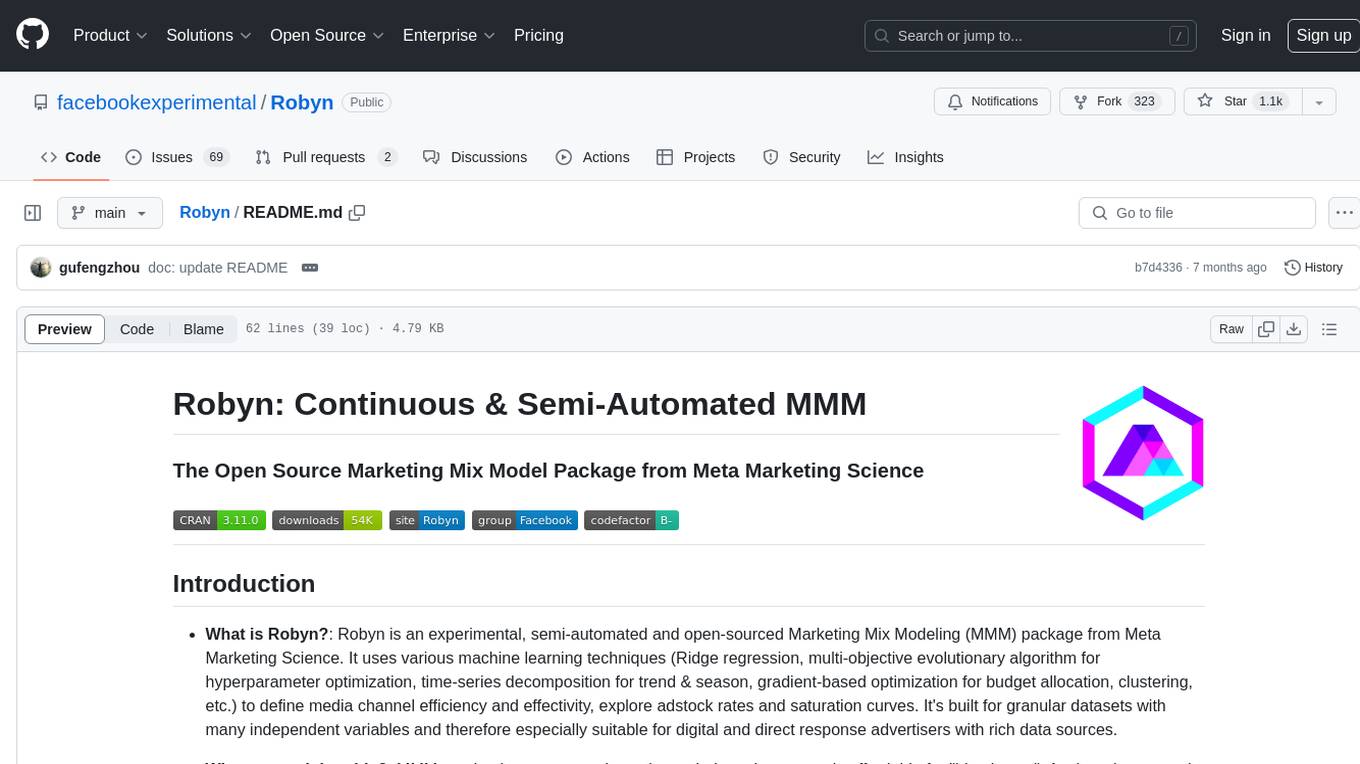
Robyn
Robyn is an experimental, semi-automated and open-sourced Marketing Mix Modeling (MMM) package from Meta Marketing Science. It uses various machine learning techniques to define media channel efficiency and effectivity, explore adstock rates and saturation curves. Built for granular datasets with many independent variables, especially suitable for digital and direct response advertisers with rich data sources. Aiming to democratize MMM, make it accessible for advertisers of all sizes, and contribute to the measurement landscape.
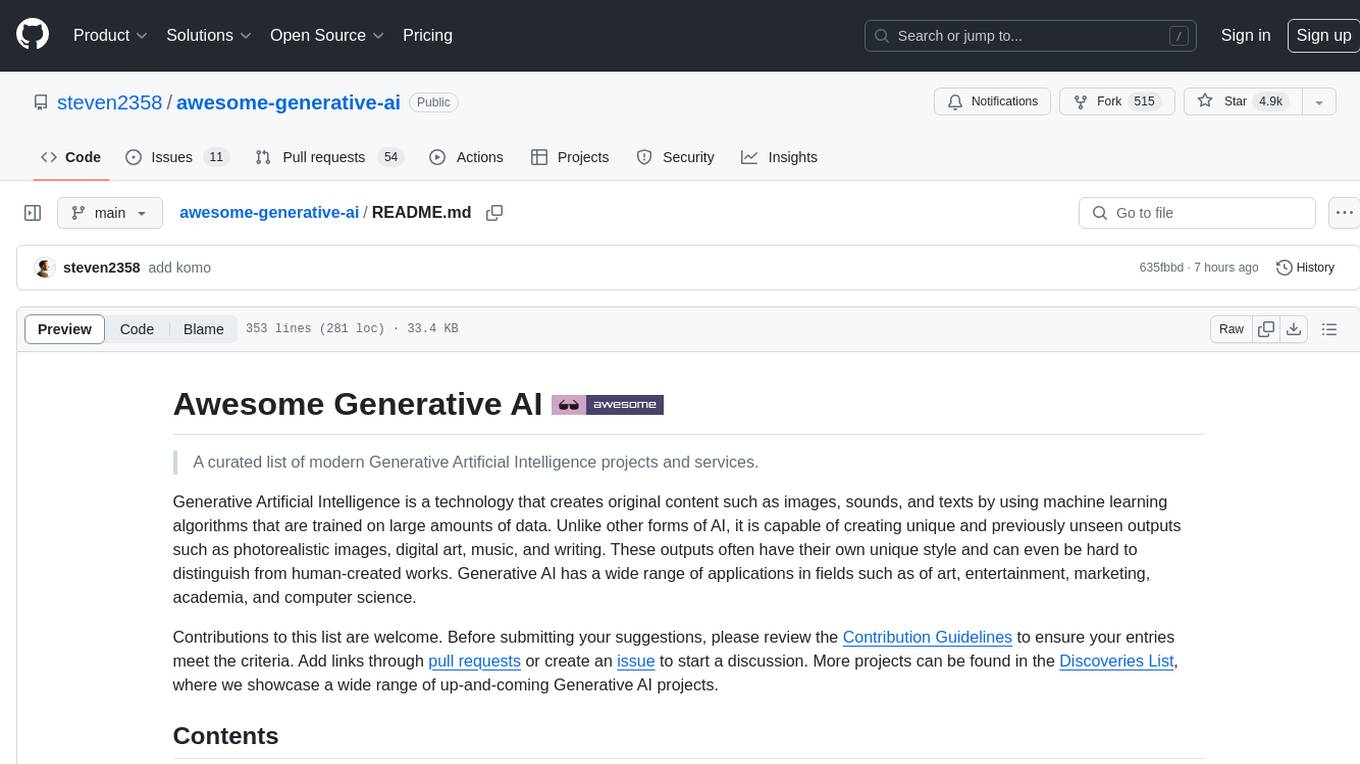
awesome-generative-ai
Awesome Generative AI is a curated list of modern Generative Artificial Intelligence projects and services. Generative AI technology creates original content like images, sounds, and texts using machine learning algorithms trained on large data sets. It can produce unique and realistic outputs such as photorealistic images, digital art, music, and writing. The repo covers a wide range of applications in art, entertainment, marketing, academia, and computer science.
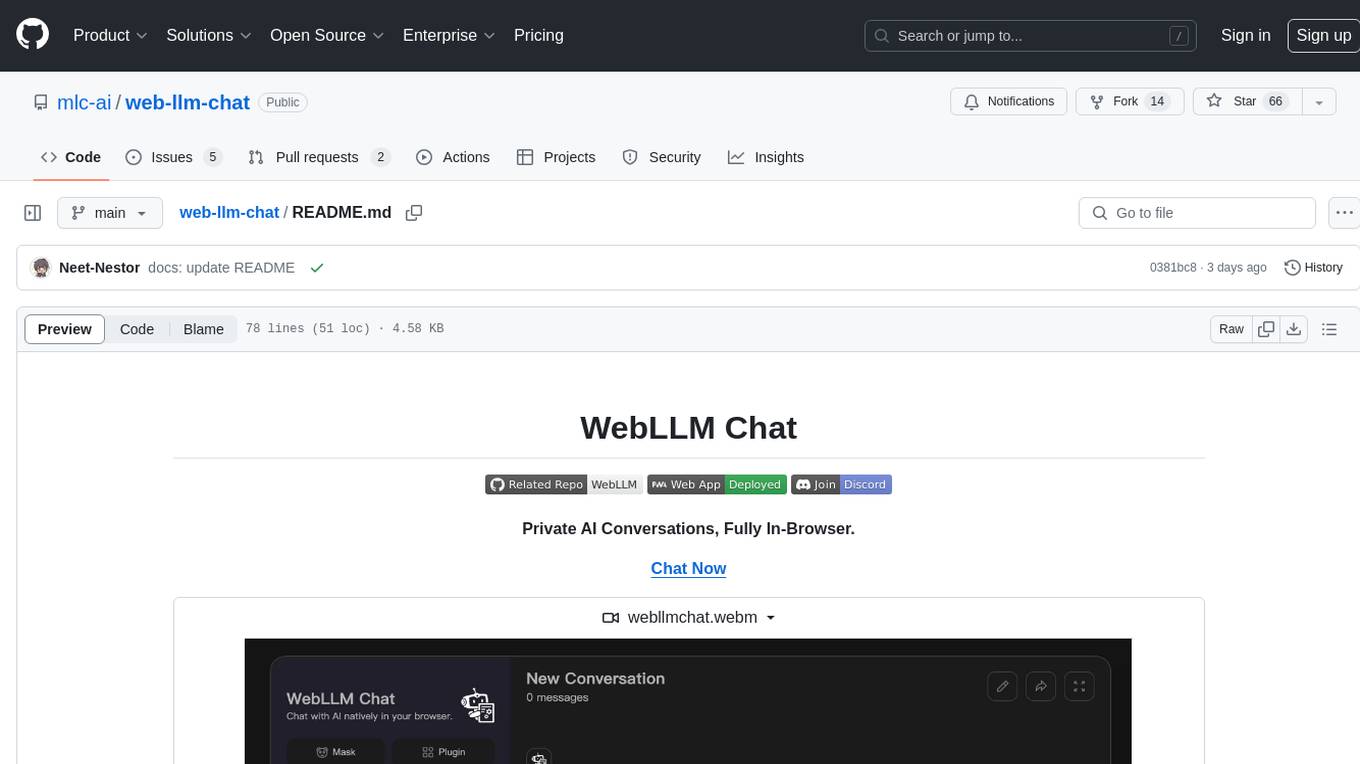
web-llm-chat
WebLLM Chat is a private AI chat interface that combines WebLLM with a user-friendly design, leveraging WebGPU to run large language models natively in your browser. It offers browser-native AI experience with WebGPU acceleration, guaranteed privacy as all data processing happens locally, offline accessibility, user-friendly interface with markdown support, and open-source customization. The project aims to democratize AI technology by making powerful tools accessible directly to end-users, enhancing the chatting experience and broadening the scope for deployment of self-hosted and customizable language models.
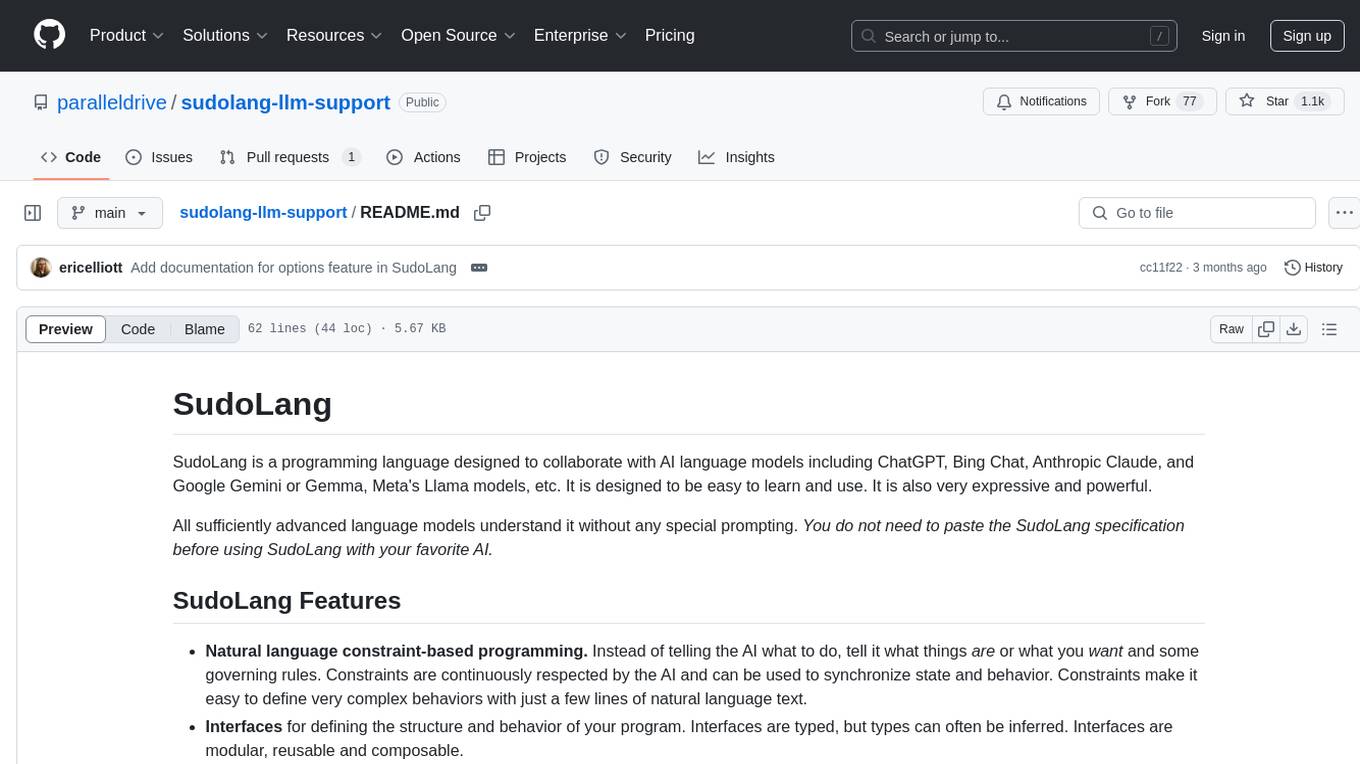
sudolang-llm-support
SudoLang is a programming language designed for collaboration with AI language models like ChatGPT, Bing Chat, Anthropic Claude, Google Gemini, Meta's Llama models, etc. It emphasizes natural language constraint-based programming, interfaces, semantic pattern matching, referential omnipotence, function composition, and Mermaid diagrams. SudoLang is easier to learn than traditional programming languages, improves reasoning performance, and offers a declarative, constraint-based, interface-oriented approach. It provides structured pseudocode for complex prompts, reducing prompting costs and response times.
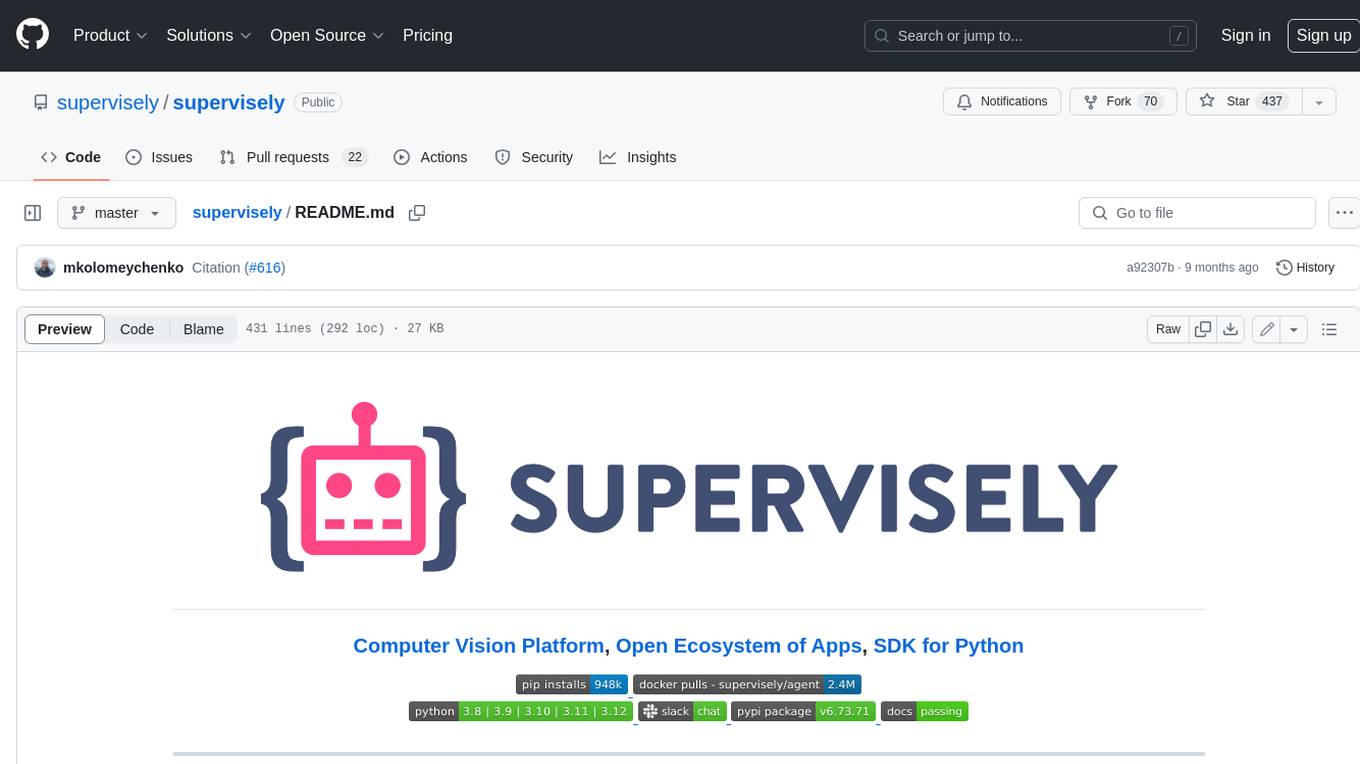
supervisely
Supervisely is a computer vision platform that provides a range of tools and services for developing and deploying computer vision solutions. It includes a data labeling platform, a model training platform, and a marketplace for computer vision apps. Supervisely is used by a variety of organizations, including Fortune 500 companies, research institutions, and government agencies.
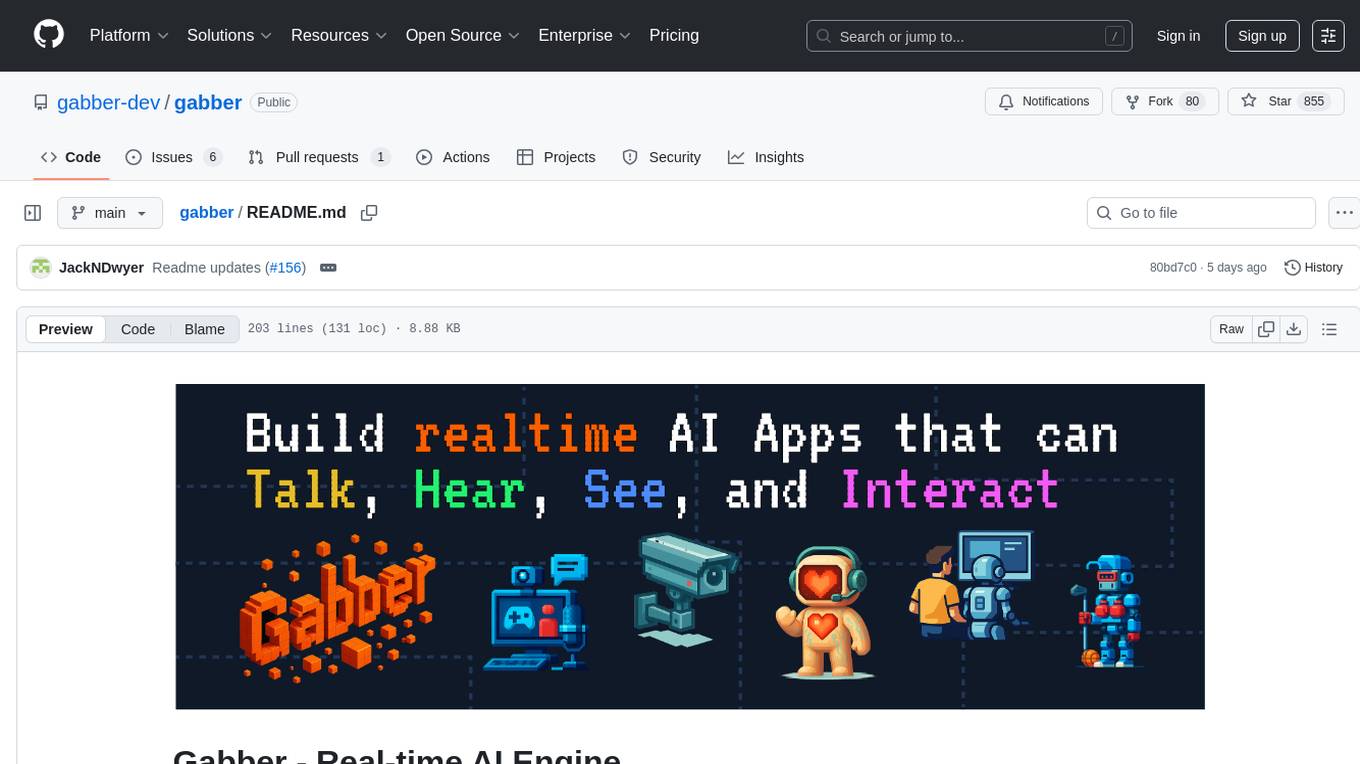
gabber
Gabber is a real-time AI engine that supports graph-based apps with multiple participants and simultaneous media streams. It allows developers to build powerful and developer-friendly AI applications across voice, text, video, and more. The engine consists of frontend and backend services including an editor, engine, and repository. Gabber provides SDKs for JavaScript/TypeScript, React, Python, Unity, and upcoming support for iOS, Android, React Native, and Flutter. The roadmap includes adding more nodes and examples, such as computer use nodes, Unity SDK with robotics simulation, SIP nodes, and multi-participant turn-taking. Users can create apps using nodes, pads, subgraphs, and state machines to define application flow and logic.
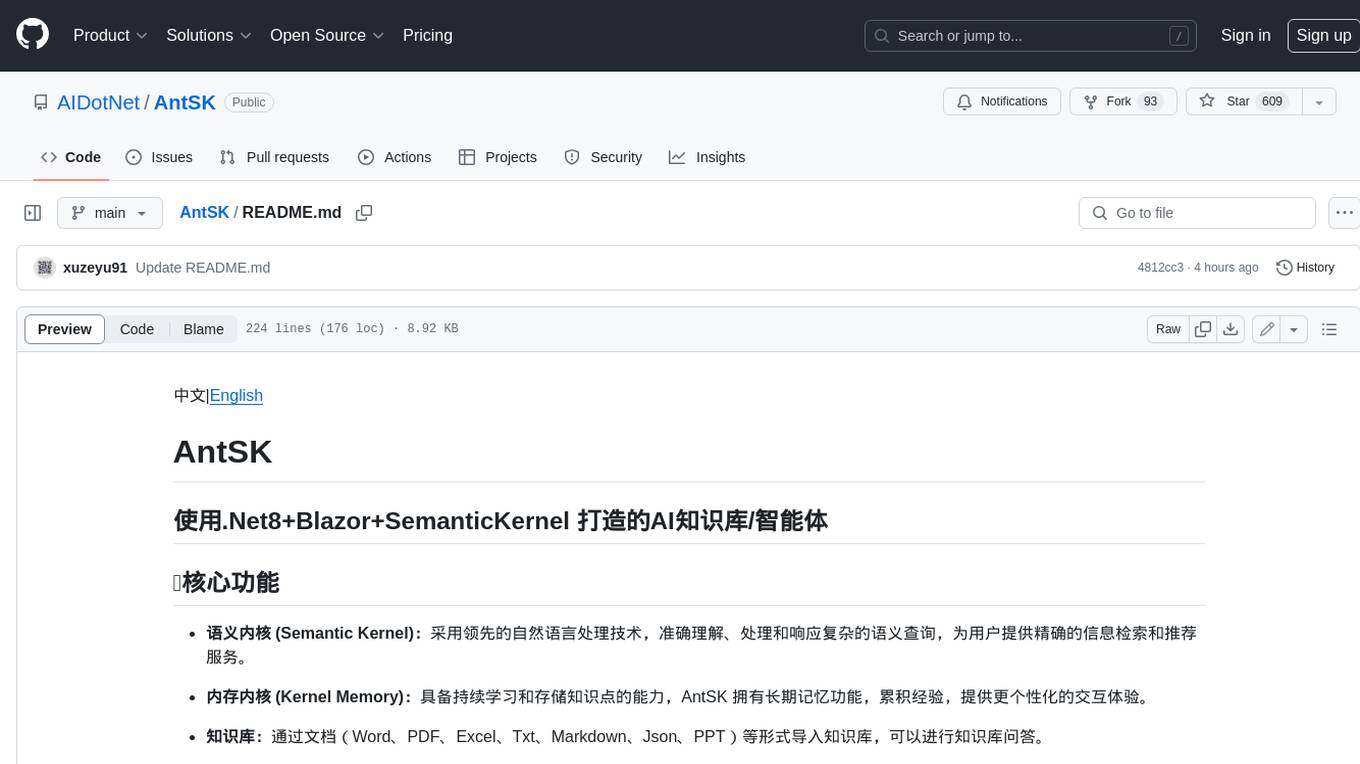
AntSK
AntSK is an AI knowledge base/agent built with .Net8+Blazor+SemanticKernel. It features a semantic kernel for accurate natural language processing, a memory kernel for continuous learning and knowledge storage, a knowledge base for importing and querying knowledge from various document formats, a text-to-image generator integrated with StableDiffusion, GPTs generation for creating personalized GPT models, API interfaces for integrating AntSK into other applications, an open API plugin system for extending functionality, a .Net plugin system for integrating business functions, real-time information retrieval from the internet, model management for adapting and managing different models from different vendors, support for domestic models and databases for operation in a trusted environment, and planned model fine-tuning based on llamafactory.
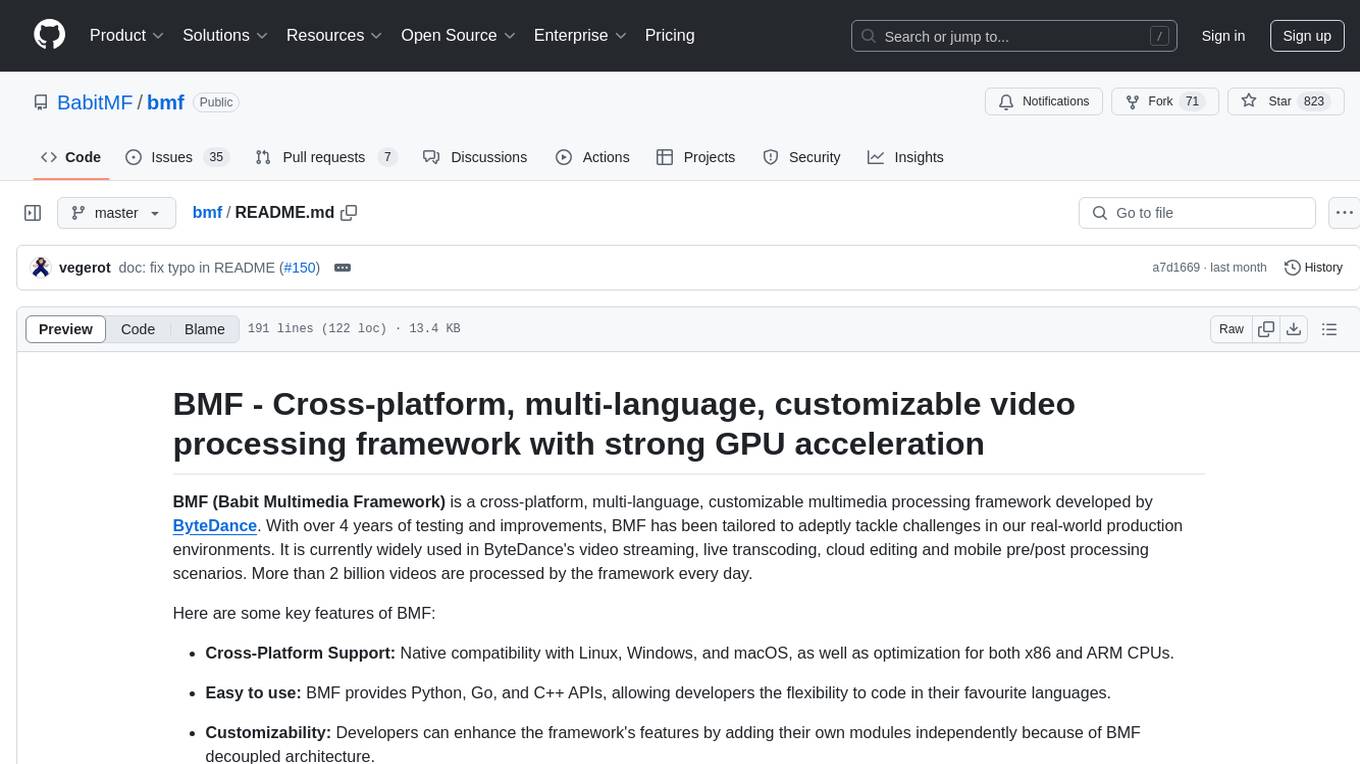
bmf
BMF (Babit Multimedia Framework) is a cross-platform, multi-language, customizable multimedia processing framework developed by ByteDance. It offers native compatibility with Linux, Windows, and macOS, Python, Go, and C++ APIs, and high performance with strong GPU acceleration. BMF allows developers to enhance its features independently and provides efficient data conversion across popular frameworks and hardware devices. BMFLite is a client-side lightweight framework used in apps like Douyin/Xigua, serving over one billion users daily. BMF is widely used in video streaming, live transcoding, cloud editing, and mobile pre/post processing scenarios.
For similar tasks

Godot4ThirdPersonCombatPrototype
Godot4ThirdPersonCombatPrototype is a base project for third person combat, featuring player movement and camera controls with lock-on functionality. It includes setups for models, animations, AI behavior, state machines, audio, and custom resources. The project aims to provide a foundation for developers to create third-person combat mechanics in their games.
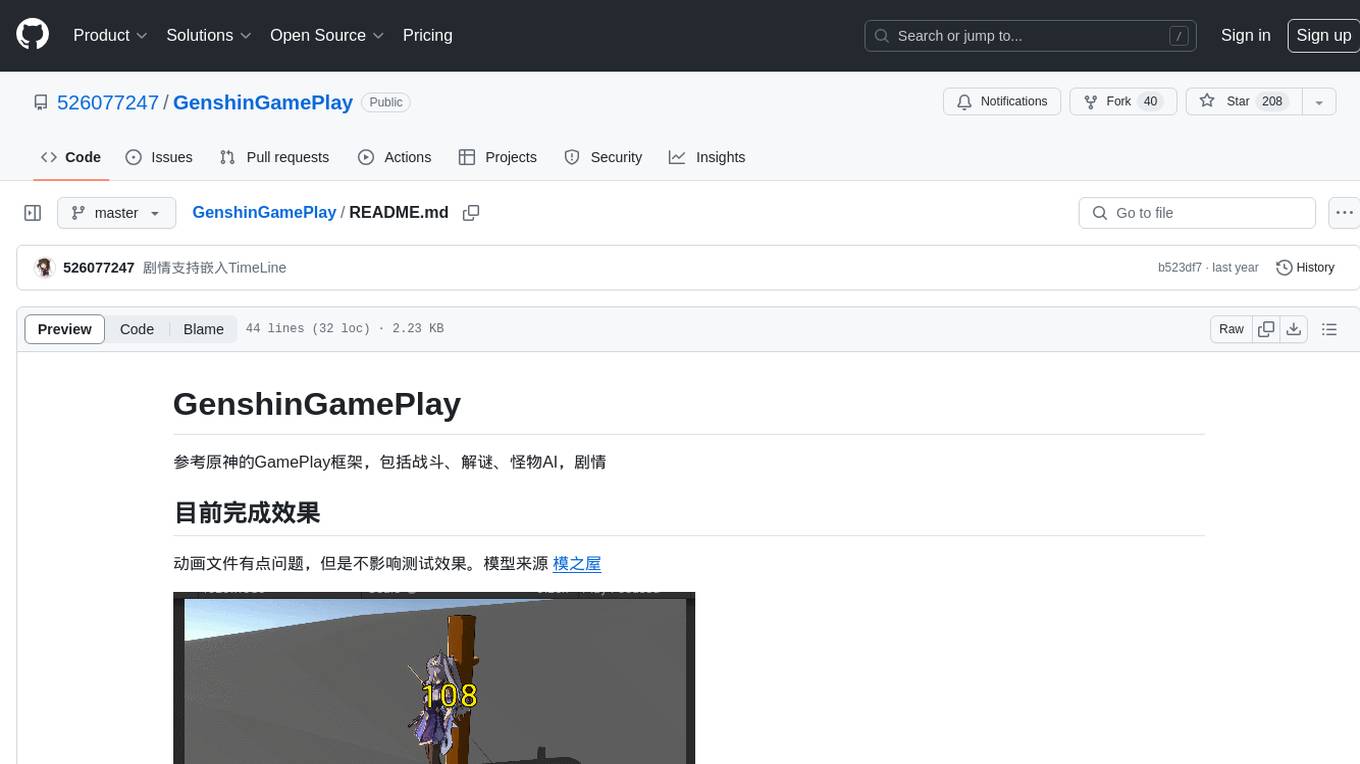
GenshinGamePlay
GenshinGamePlay is a repository that references the gameplay framework of Genshin Impact, including combat, puzzle solving, monster AI, and storyline. It currently showcases animations for combat skills, treasure hunting puzzles, and monster AI. The repository also includes a table export tool and references various Unity frameworks and plugins for game development. The repository aims to provide resources and tools for developing gameplay mechanics similar to Genshin Impact.
For similar jobs

Godot4ThirdPersonCombatPrototype
Godot4ThirdPersonCombatPrototype is a base project for third person combat, featuring player movement and camera controls with lock-on functionality. It includes setups for models, animations, AI behavior, state machines, audio, and custom resources. The project aims to provide a foundation for developers to create third-person combat mechanics in their games.
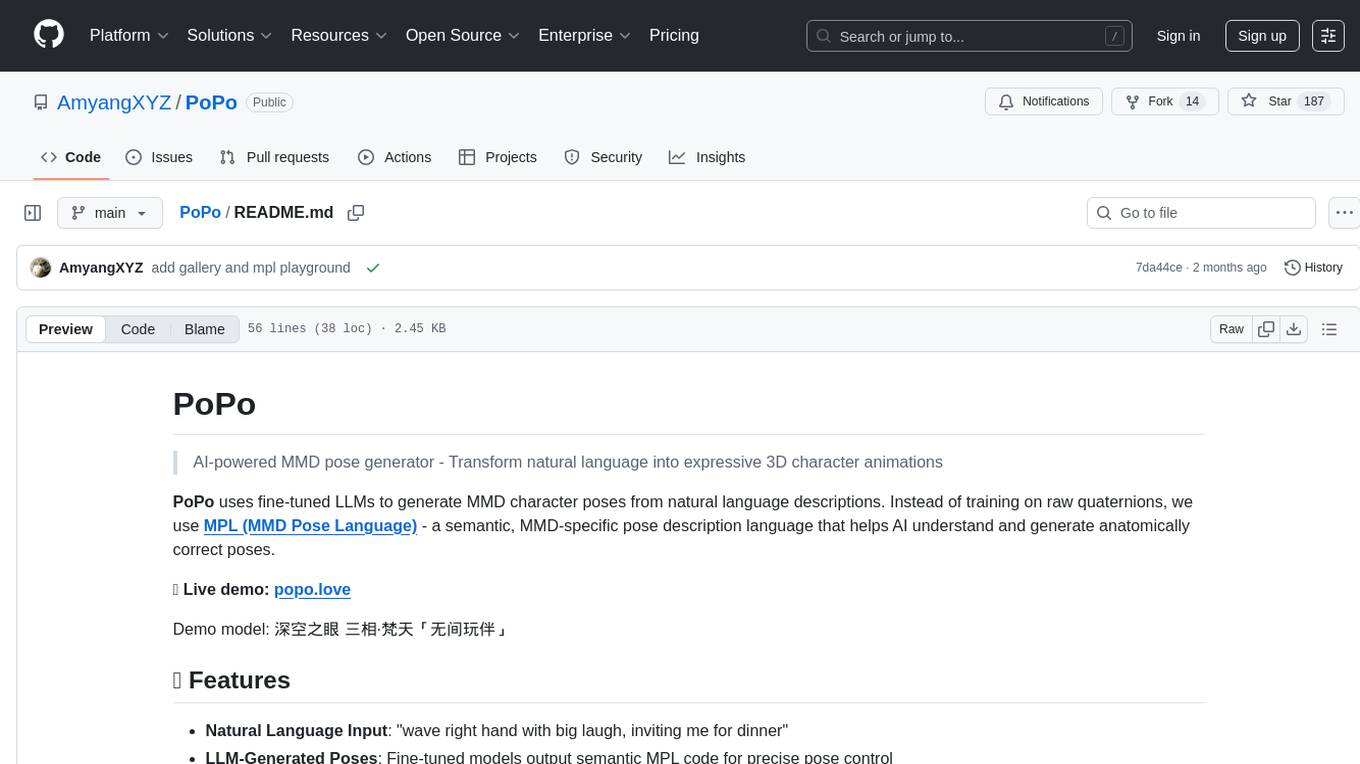
PoPo
PoPo is an AI-powered MMD pose generator that transforms natural language descriptions into expressive 3D character animations. It uses MPL (MMD Pose Language) to generate anatomically correct poses, providing real-time rendering and precise pose control. The tool fine-tunes LLMs with MPL, resulting in better training convergence, consistent outputs, anatomically correct poses, and debuggable results. The technology stack includes Next.js, Babylon.js, MPL, fine-tuned GPT-4o-mini, and Vercel for deployment. By training on semantic MPL instead of raw quaternions, PoPo enables the AI to understand the 'grammar' of human movement.
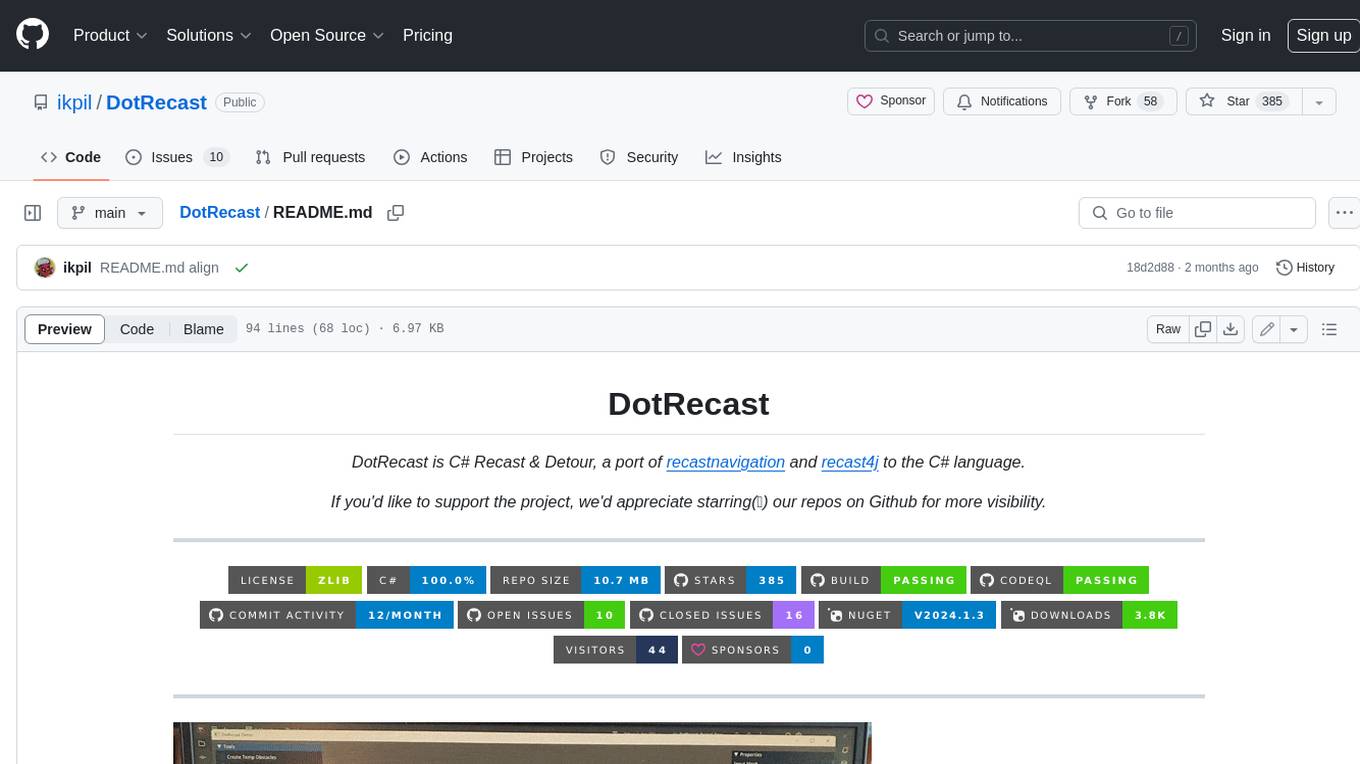
DotRecast
DotRecast is a C# port of Recast & Detour, a navigation library used in many AAA and indie games and engines. It provides automatic navmesh generation, fast turnaround times, detailed customization options, and is dependency-free. Recast Navigation is divided into multiple modules, each contained in its own folder: - DotRecast.Core: Core utils - DotRecast.Recast: Navmesh generation - DotRecast.Detour: Runtime loading of navmesh data, pathfinding, navmesh queries - DotRecast.Detour.TileCache: Navmesh streaming. Useful for large levels and open-world games - DotRecast.Detour.Crowd: Agent movement, collision avoidance, and crowd simulation - DotRecast.Detour.Dynamic: Robust support for dynamic nav meshes combining pre-built voxels with dynamic objects which can be freely added and removed - DotRecast.Detour.Extras: Simple tool to import navmeshes created with A* Pathfinding Project - DotRecast.Recast.Toolset: All modules - DotRecast.Recast.Demo: Standalone, comprehensive demo app showcasing all aspects of Recast & Detour's functionality - Tests: Unit tests Recast constructs a navmesh through a multi-step mesh rasterization process: 1. First Recast rasterizes the input triangle meshes into voxels. 2. Voxels in areas where agents would not be able to move are filtered and removed. 3. The walkable areas described by the voxel grid are then divided into sets of polygonal regions. 4. The navigation polygons are generated by re-triangulating the generated polygonal regions into a navmesh. You can use Recast to build a single navmesh, or a tiled navmesh. Single meshes are suitable for many simple, static cases and are easy to work with. Tiled navmeshes are more complex to work with but better support larger, more dynamic environments. Tiled meshes enable advanced Detour features like re-baking, hierarchical path-planning, and navmesh data-streaming.
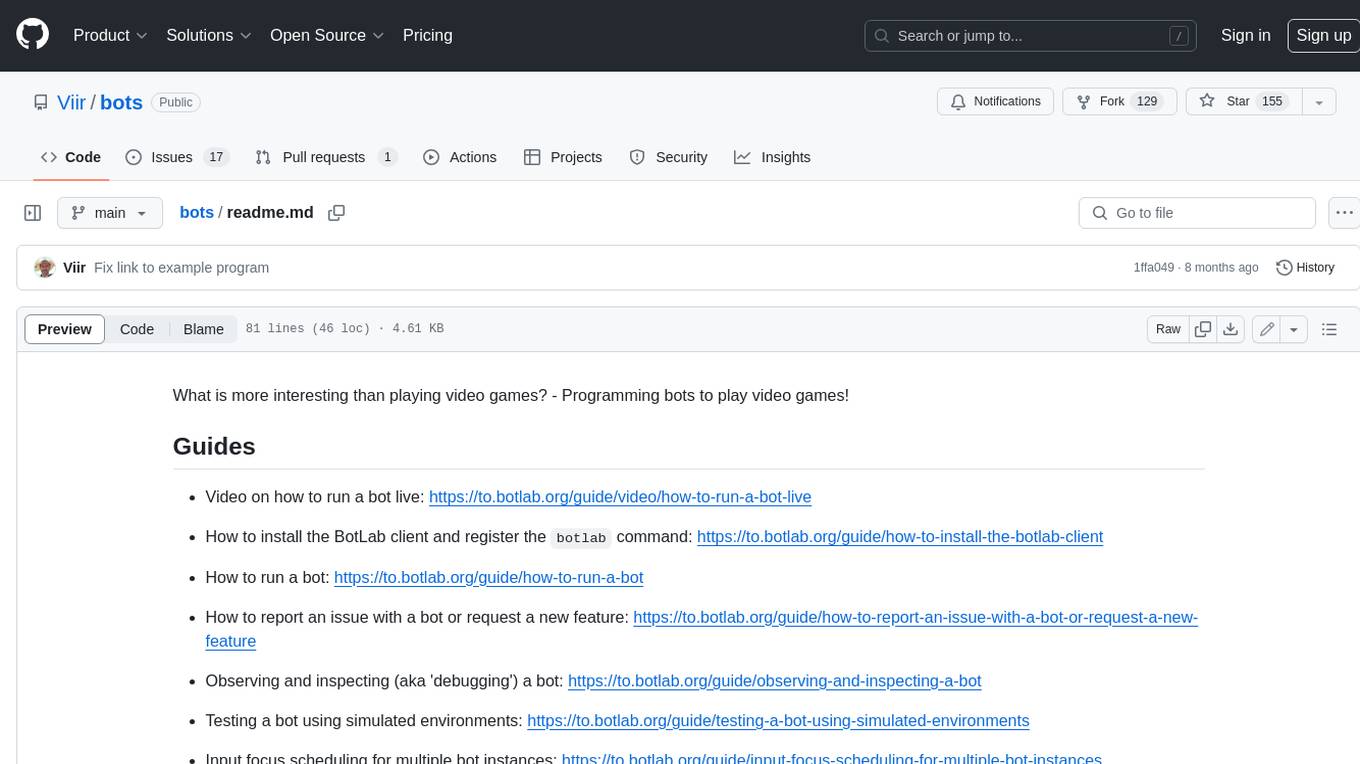
bots
The 'bots' repository is a collection of guides, tools, and example bots for programming bots to play video games. It provides resources on running bots live, installing the BotLab client, debugging bots, testing bots in simulated environments, and more. The repository also includes example bots for games like EVE Online, Tribal Wars 2, and Elvenar. Users can learn about developing bots for specific games, syntax of the Elm programming language, and tools for memory reading development. Additionally, there are guides on bot programming, contributing to BotLab, and exploring Elm syntax and core library.

Half-Life-Resurgence
Half-Life-Resurgence is a recreation and expansion project that brings NPCs, entities, and weapons from the Half-Life series into Garry's Mod. The goal is to faithfully recreate original content while also introducing new features and custom content envisioned by the community. Users can expect a wide range of NPCs with new abilities, AI behaviors, and weapons, as well as support for playing as any character and replacing NPCs in Half-Life 1 & 2 campaigns.
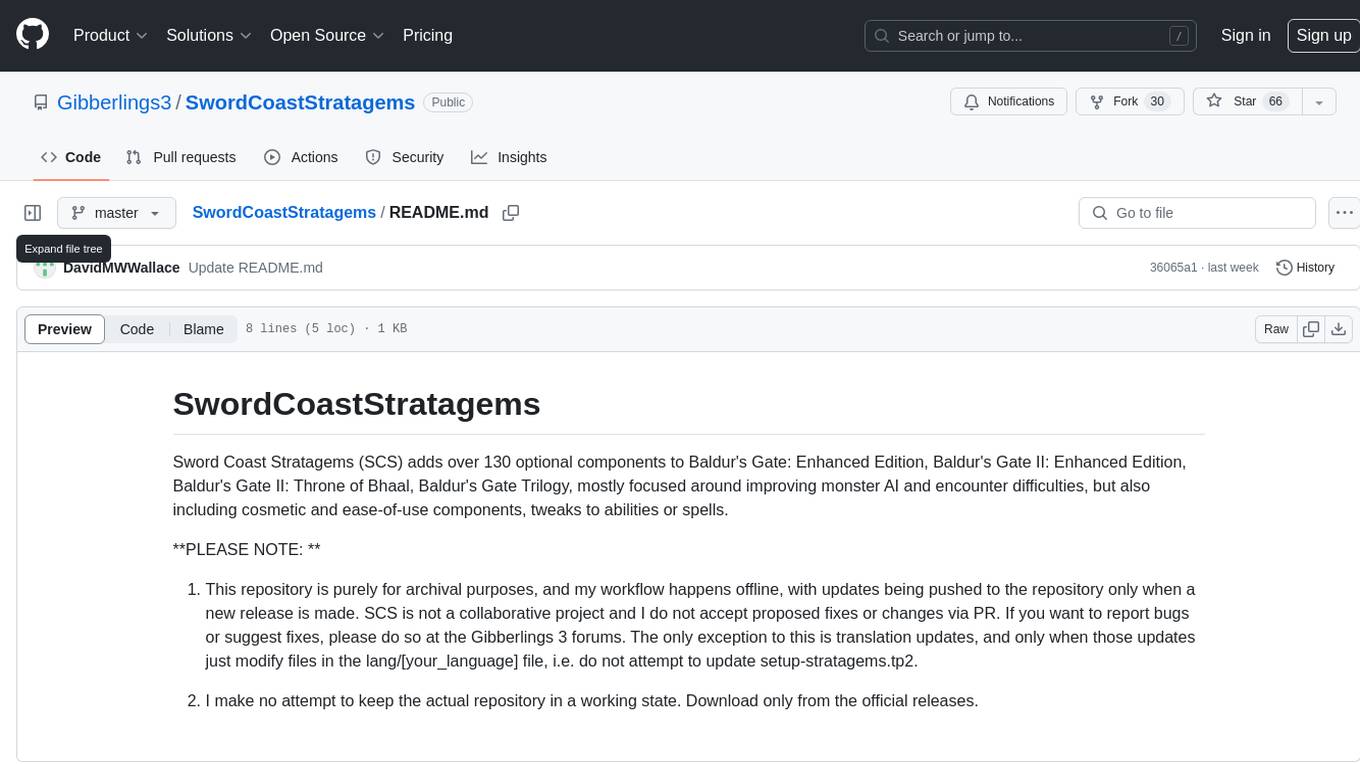
SwordCoastStratagems
Sword Coast Stratagems (SCS) is a mod that enhances Baldur's Gate games by adding over 130 optional components focused on improving monster AI, encounter difficulties, cosmetic enhancements, and ease-of-use tweaks. This repository serves as an archive for the project, with updates pushed only when new releases are made. It is not a collaborative project, and bug reports or suggestions should be made at the Gibberlings 3 forums. The mod is designed for offline workflow and should be downloaded from official releases.
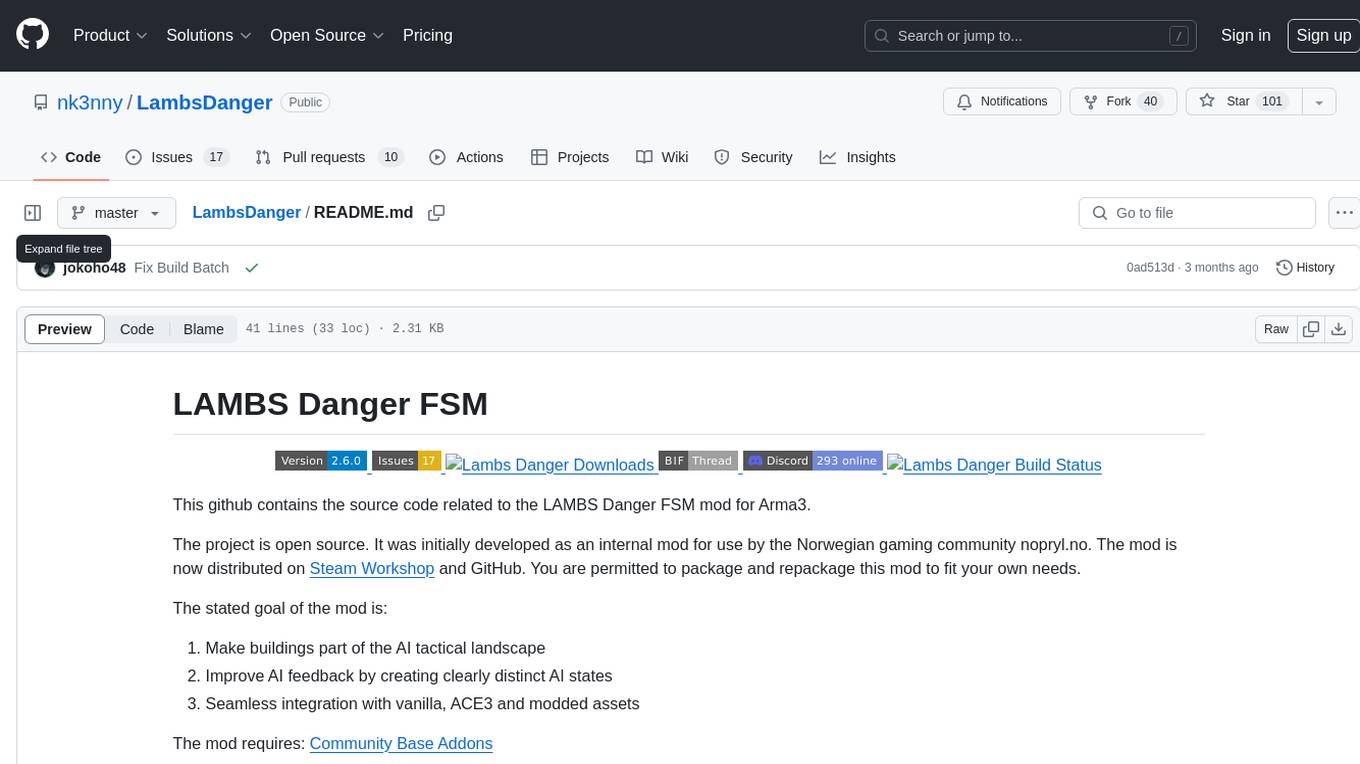
LambsDanger
LAMBS Danger FSM is an open-source mod developed for Arma3, aimed at enhancing the AI behavior by integrating buildings into the tactical landscape, creating distinct AI states, and ensuring seamless compatibility with vanilla, ACE3, and modded assets. Originally created for the Norwegian gaming community, it is now available on Steam Workshop and GitHub for wider use. Users are allowed to customize and redistribute the mod according to their requirements. The project is licensed under the GNU General Public License (GPLv2) with additional amendments.

beehave
Beehave is a powerful addon for Godot Engine that enables users to create robust AI systems using behavior trees. It simplifies the design of complex NPC behaviors, challenging boss battles, and other advanced setups. Beehave allows for the creation of highly adaptive AI that responds to changes in the game world and overcomes unexpected obstacles, catering to both beginners and experienced developers. The tool is currently in development for version 3.0.